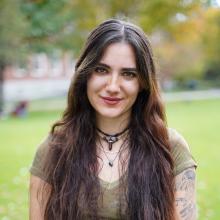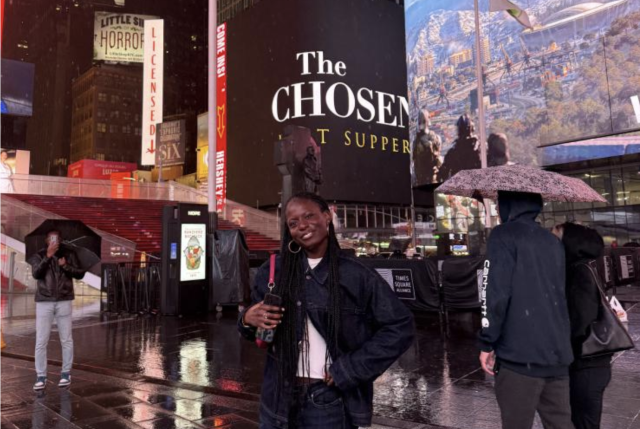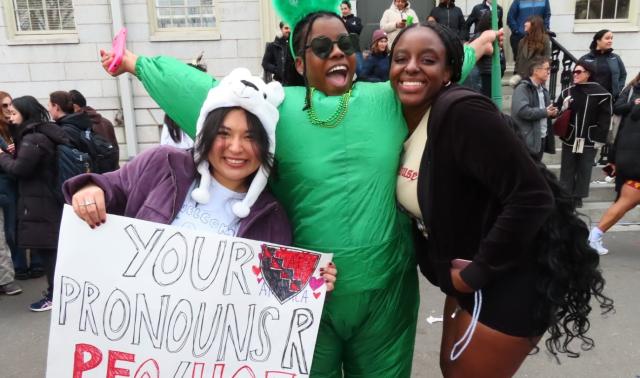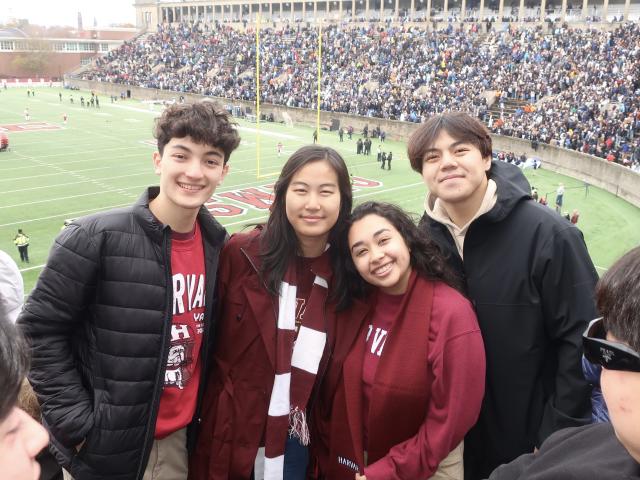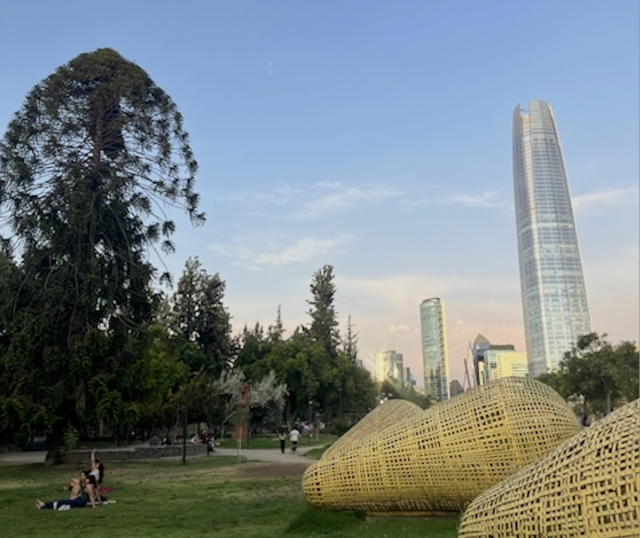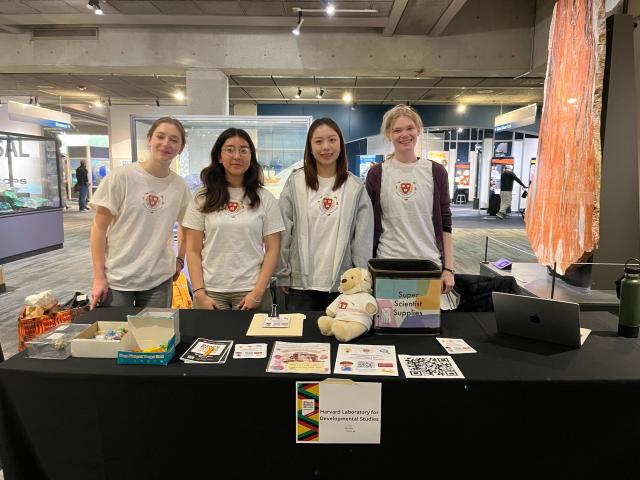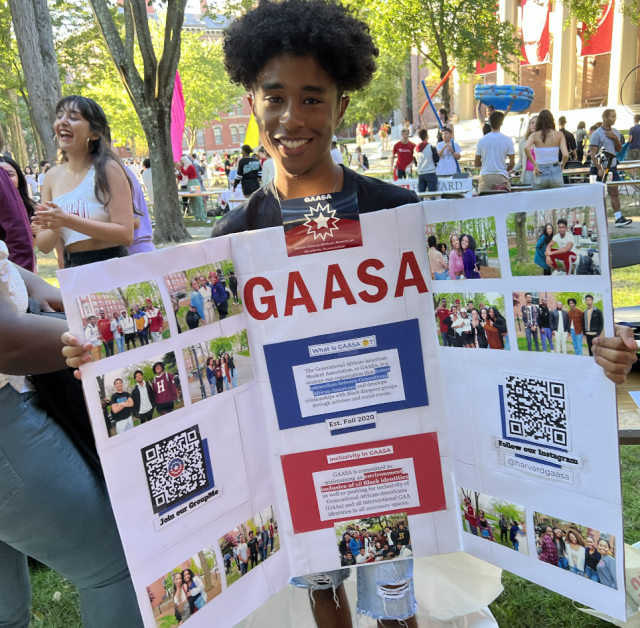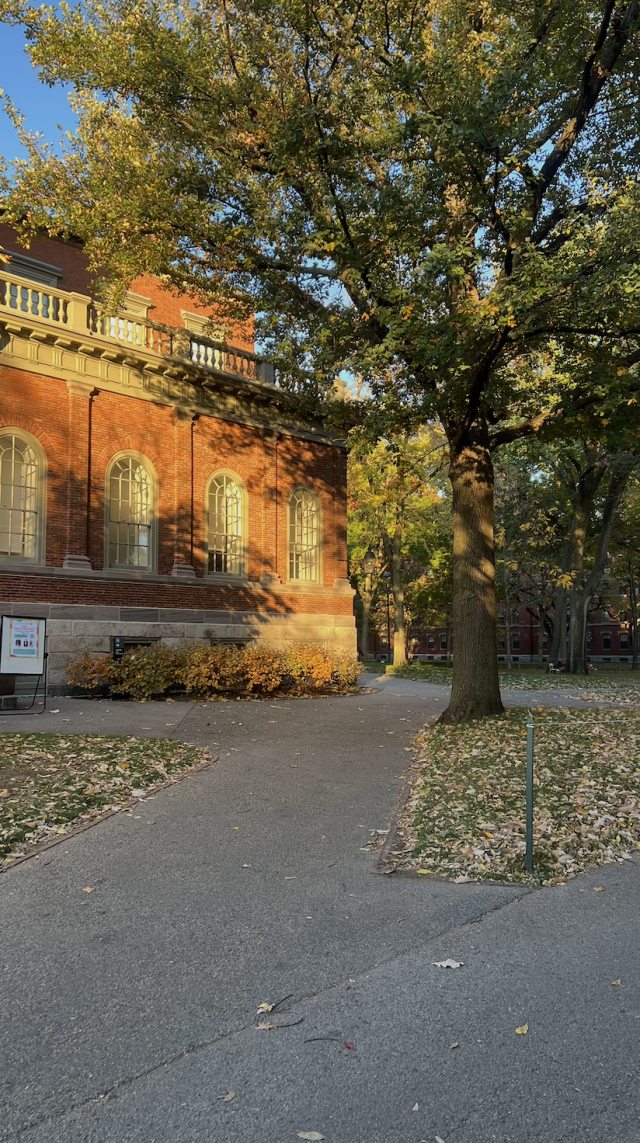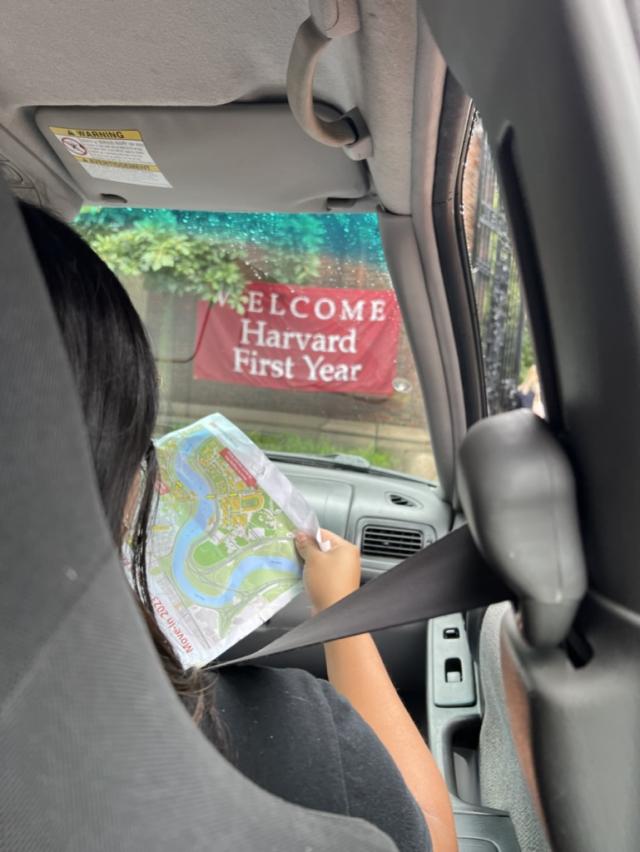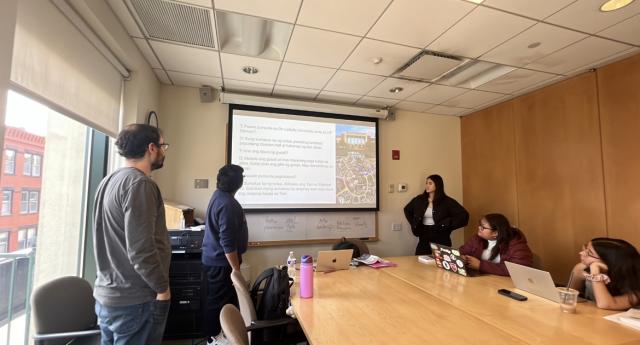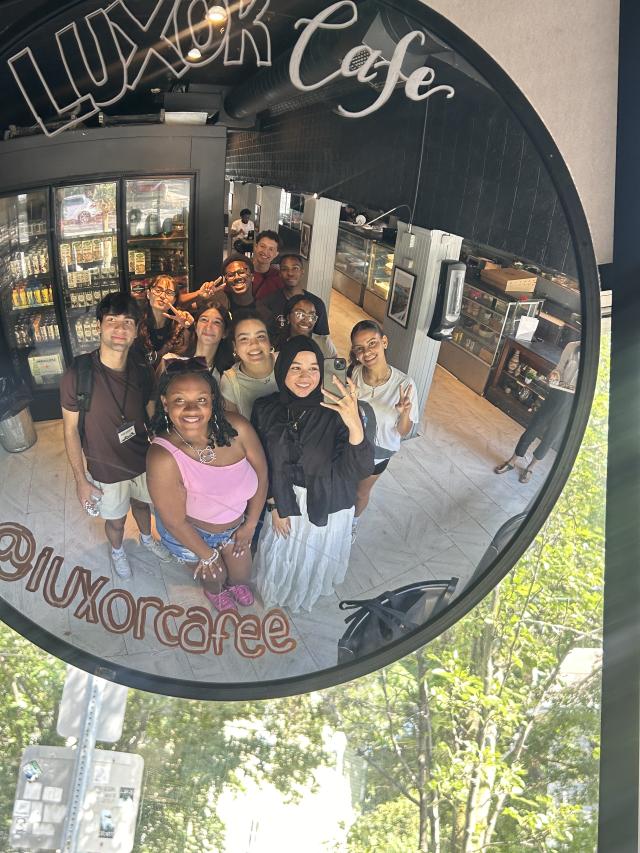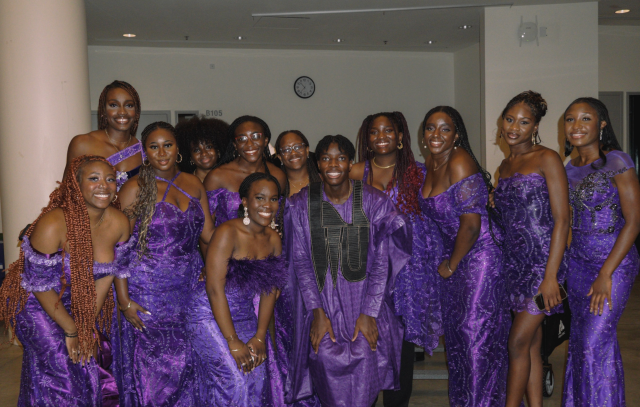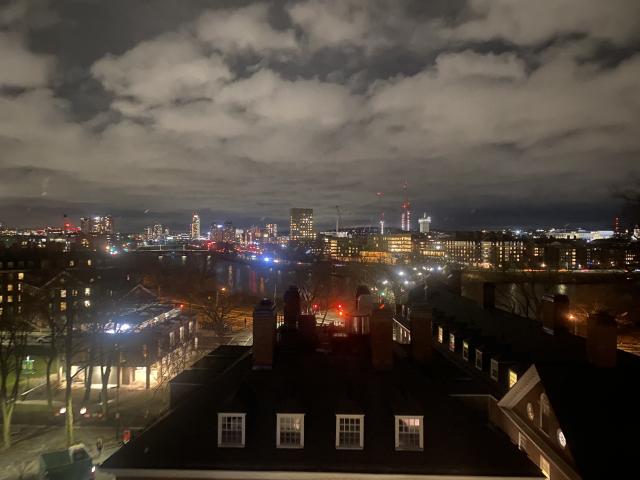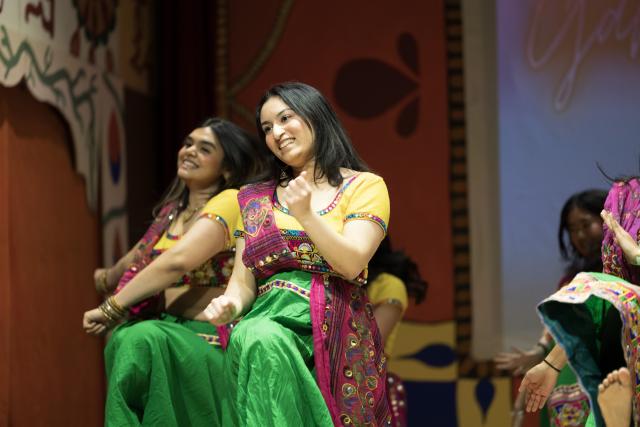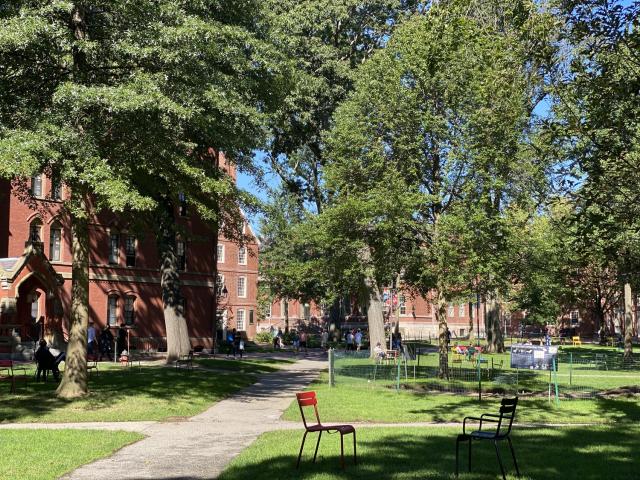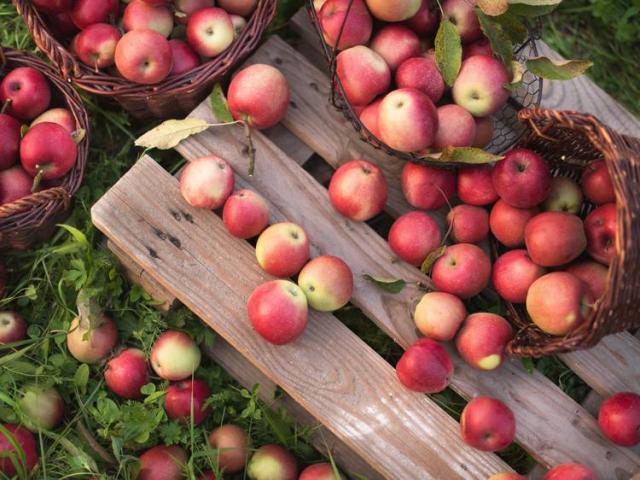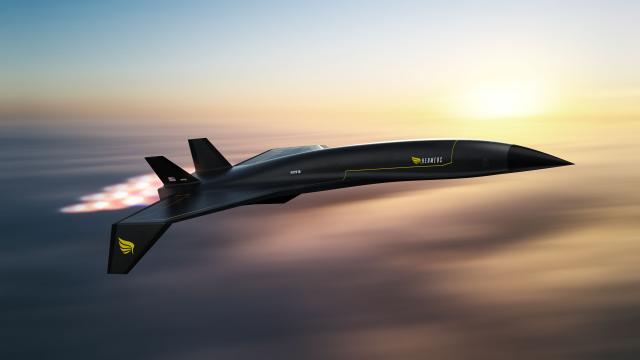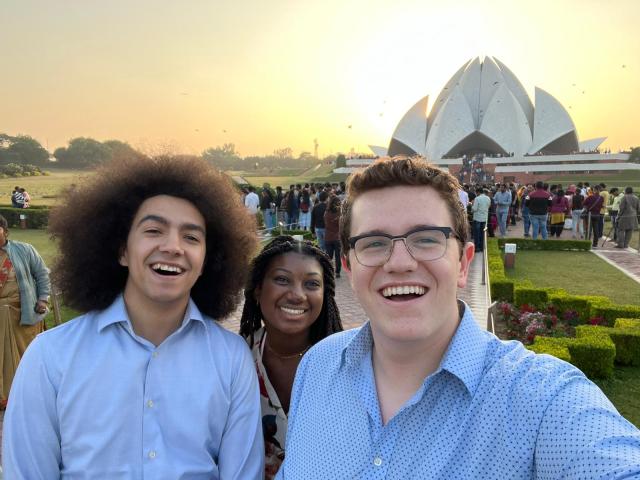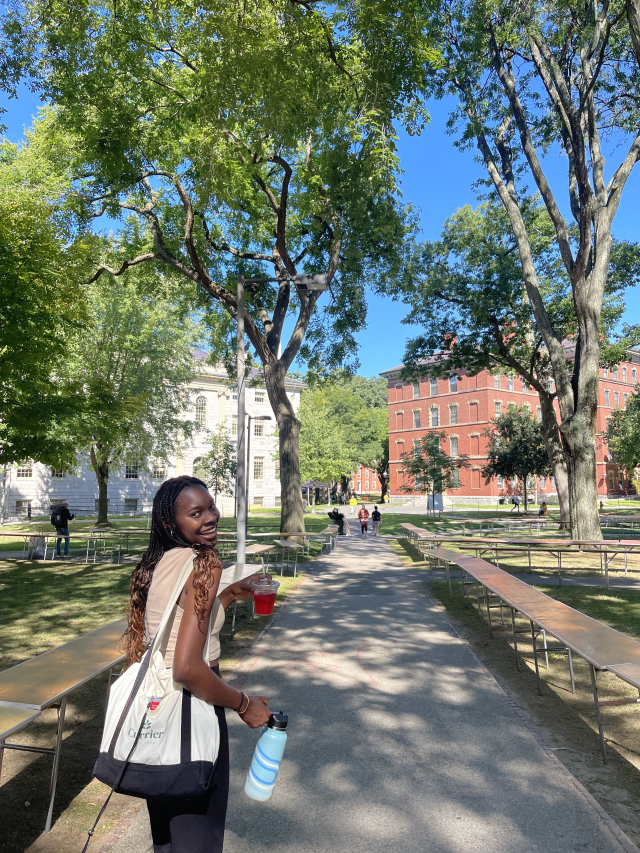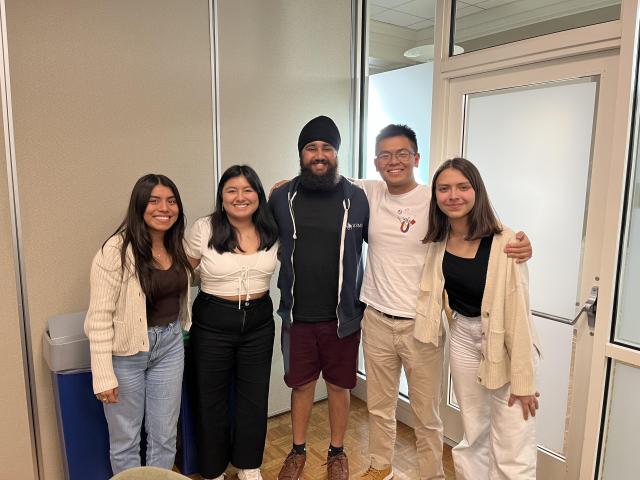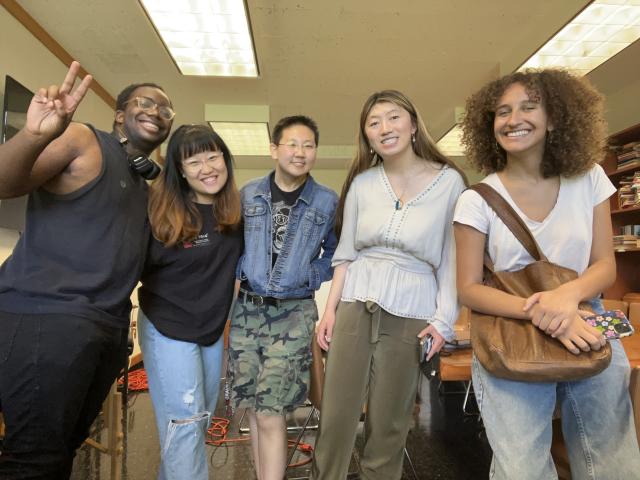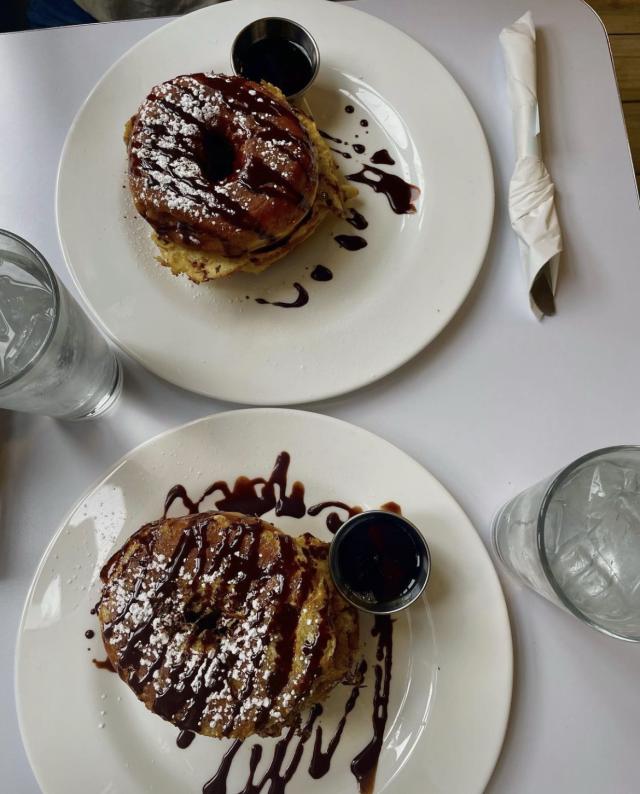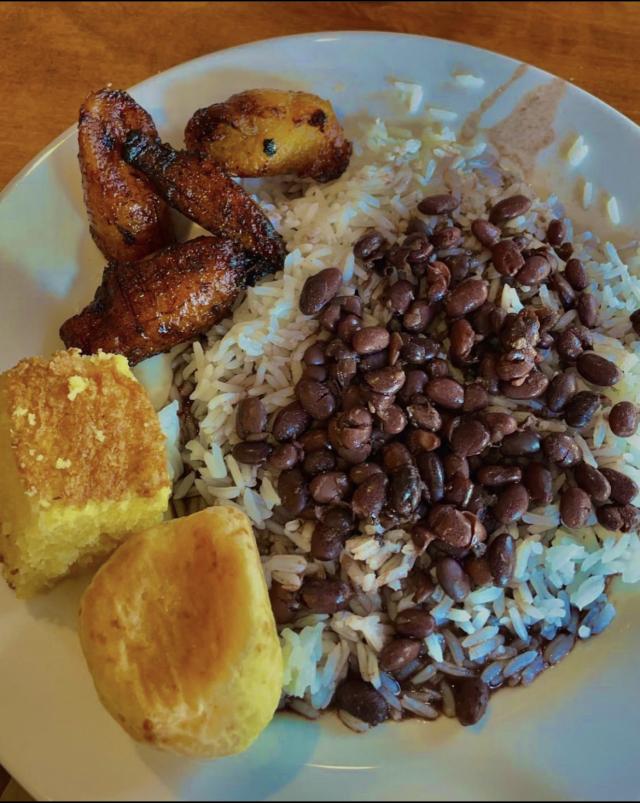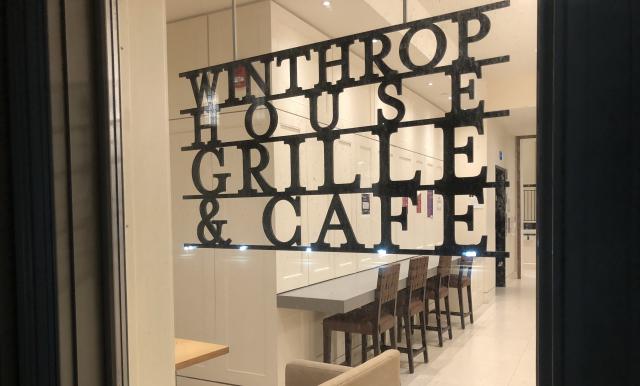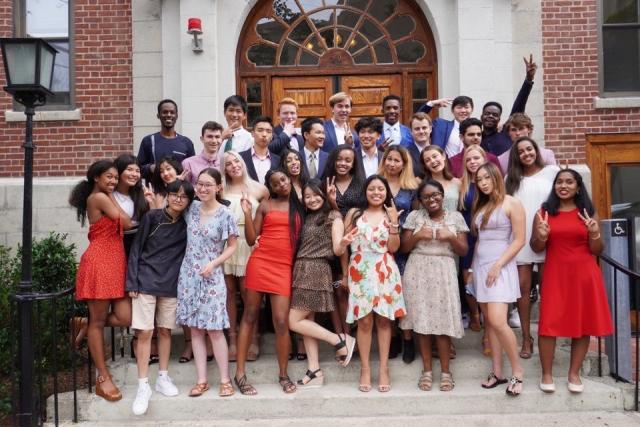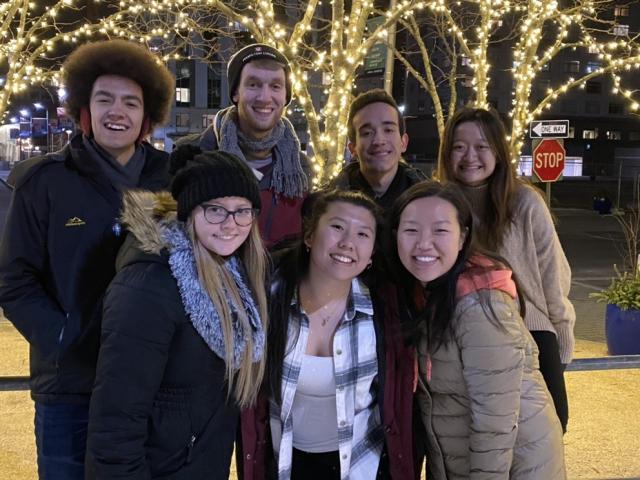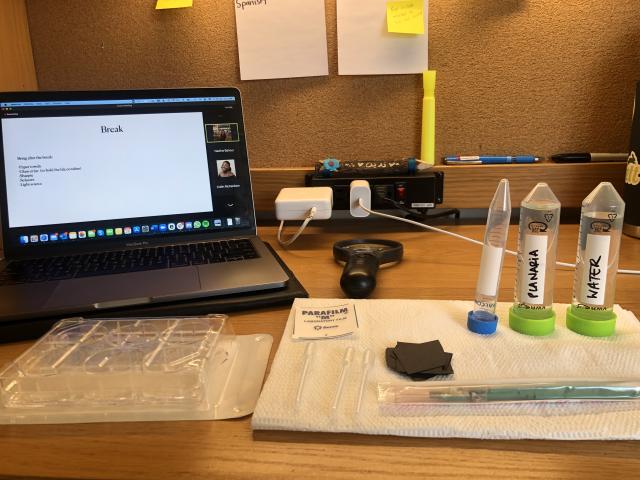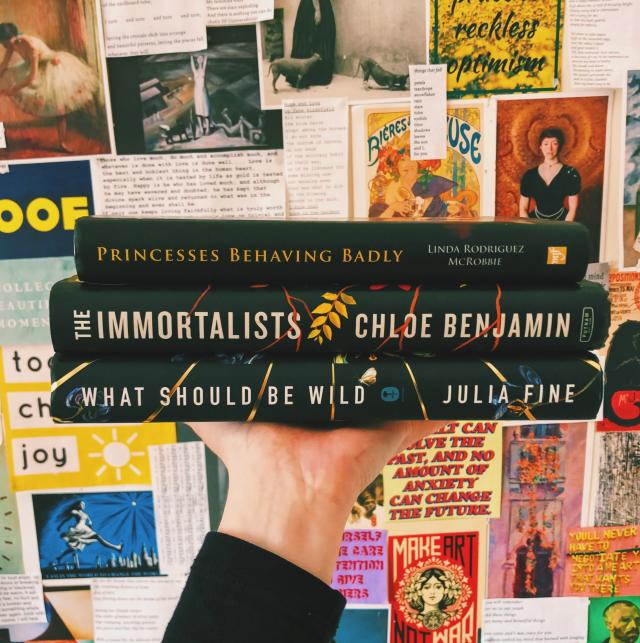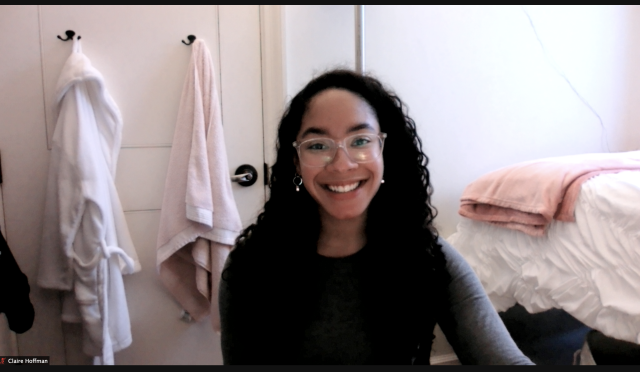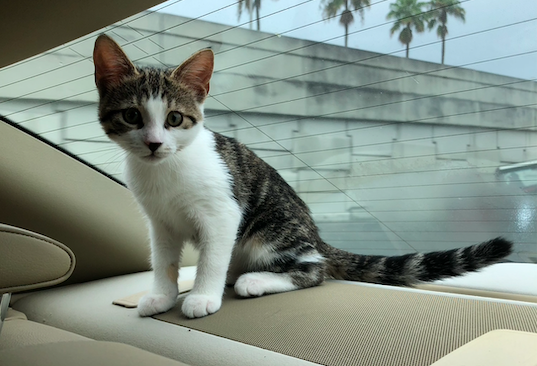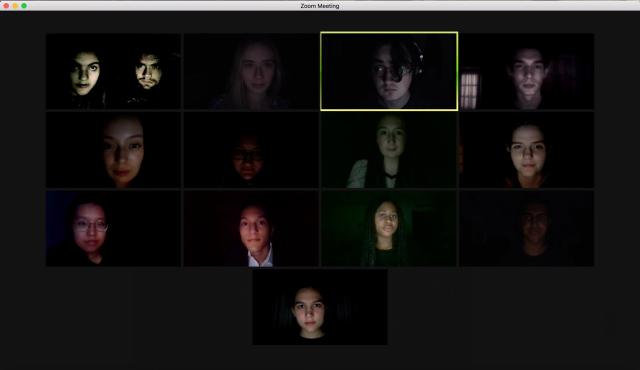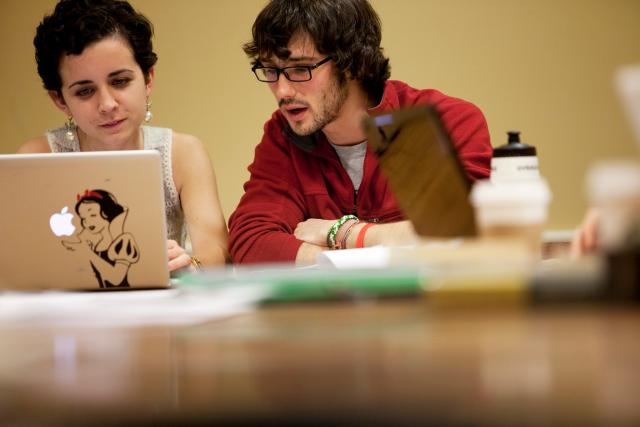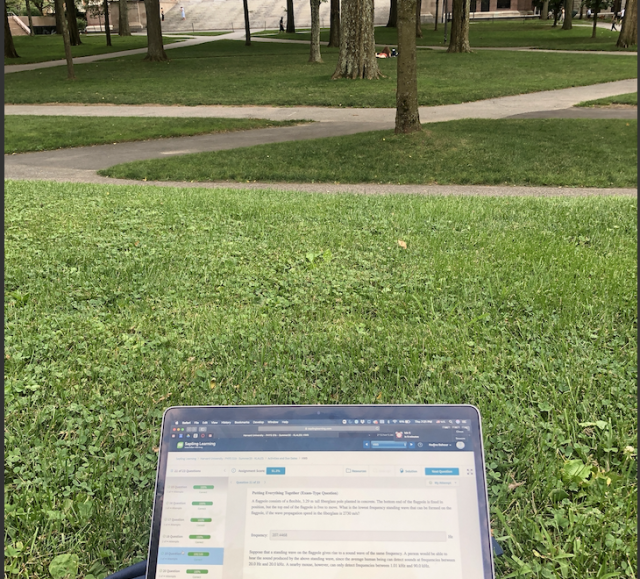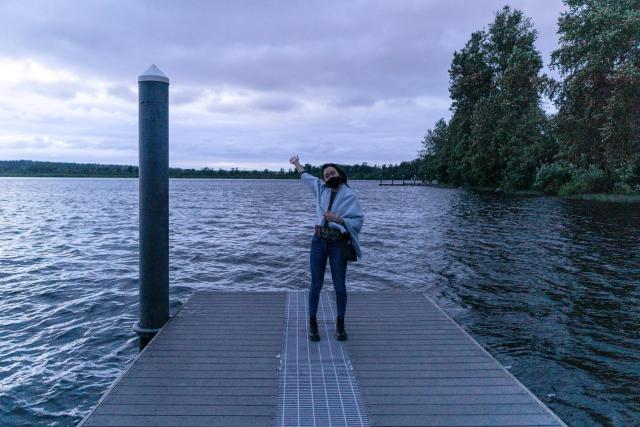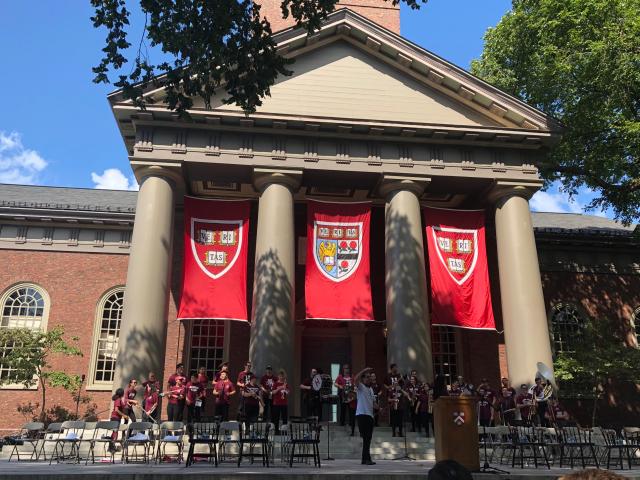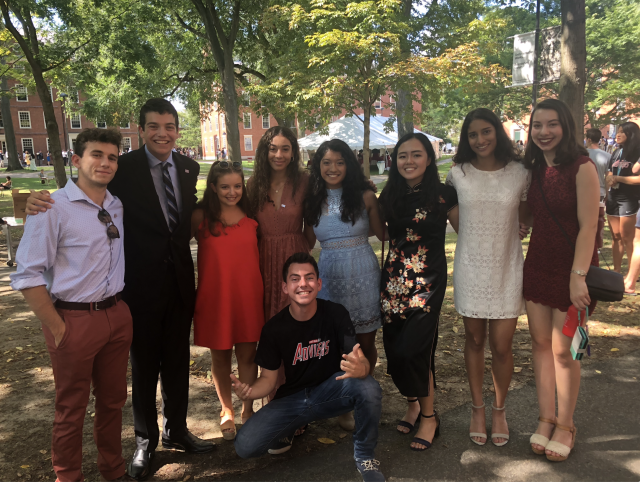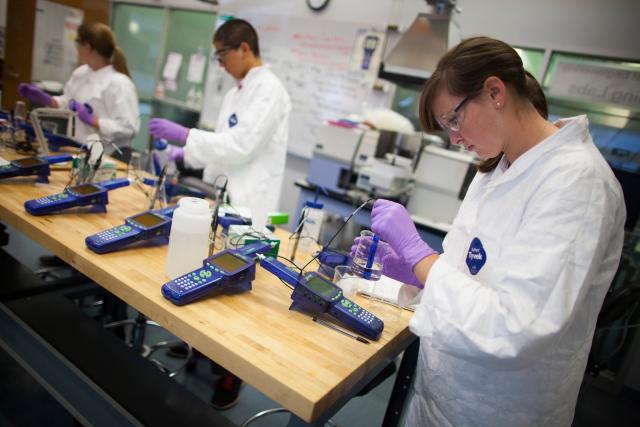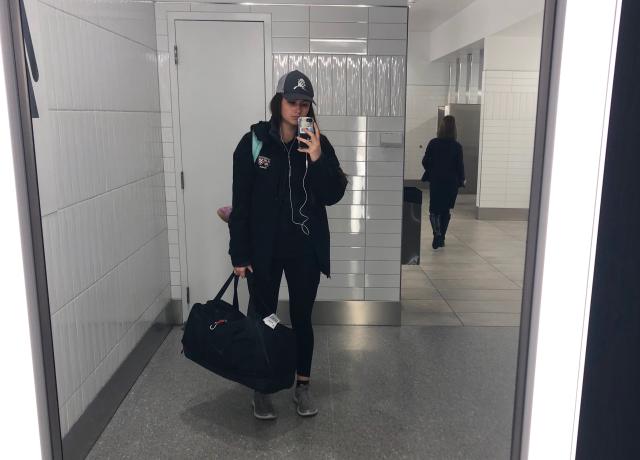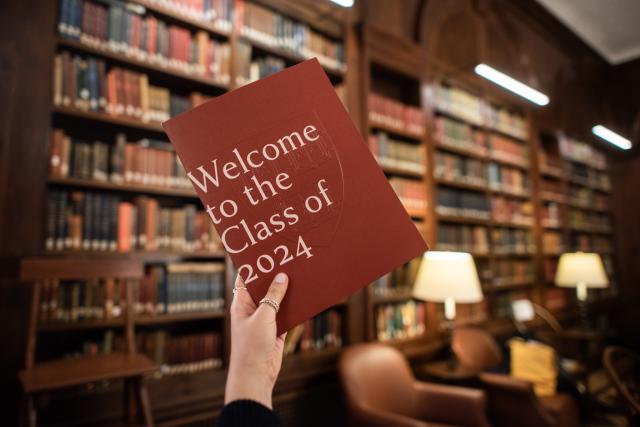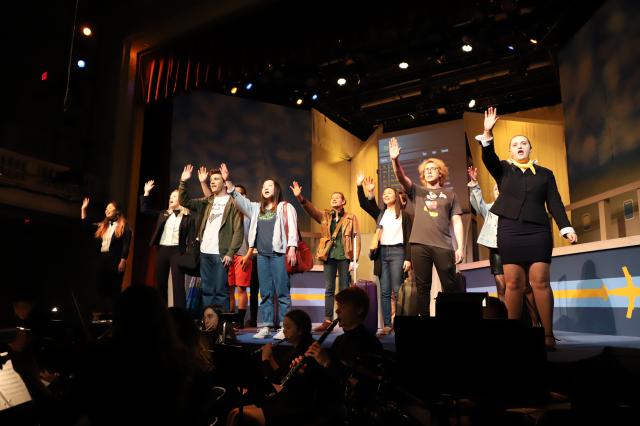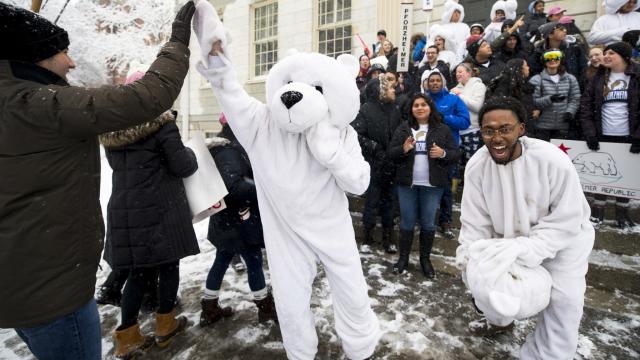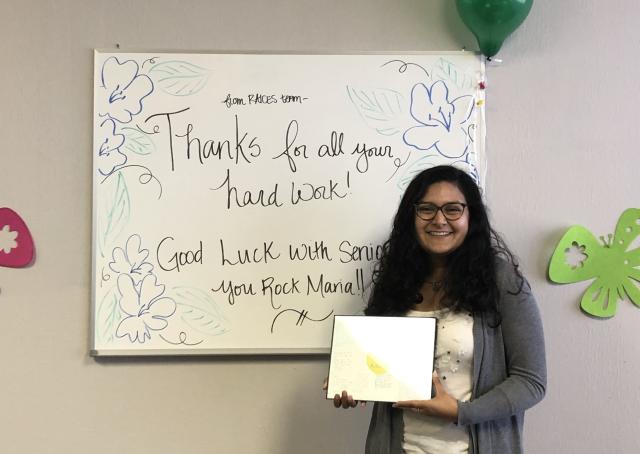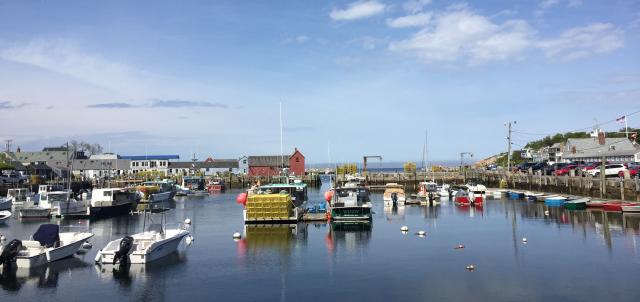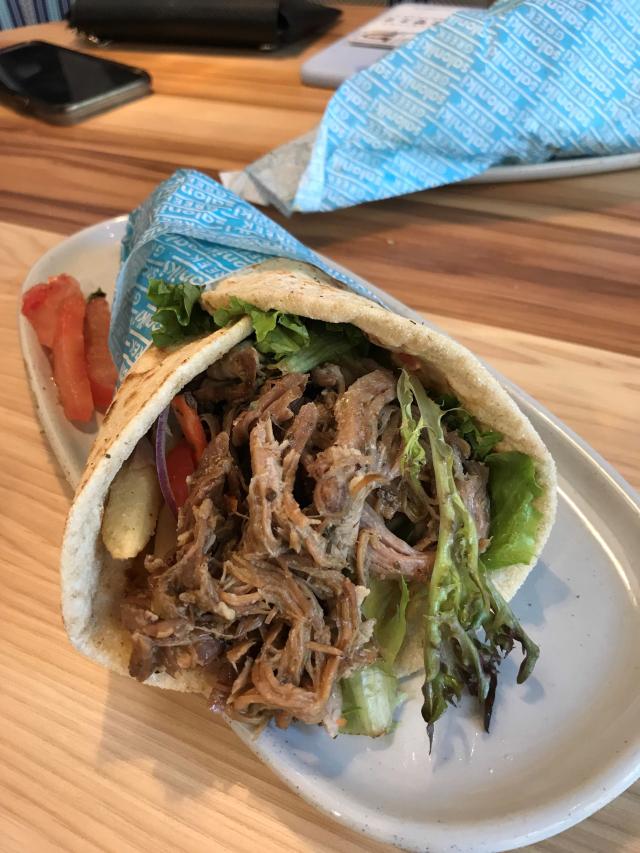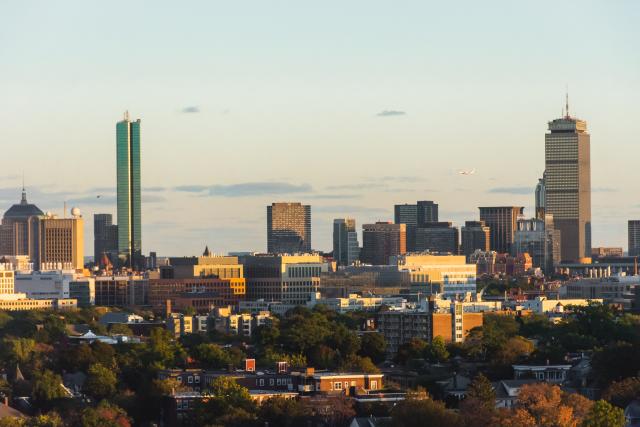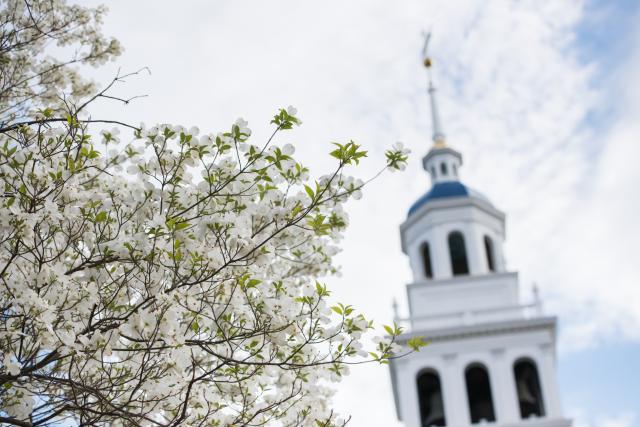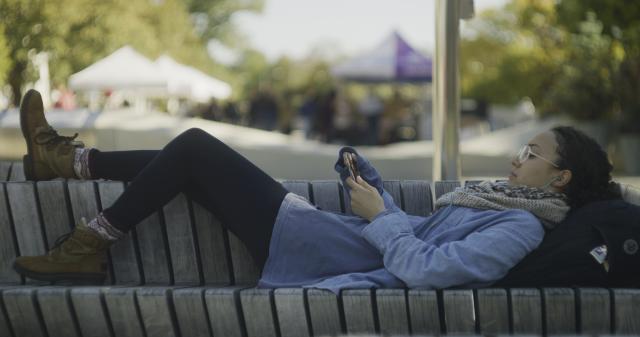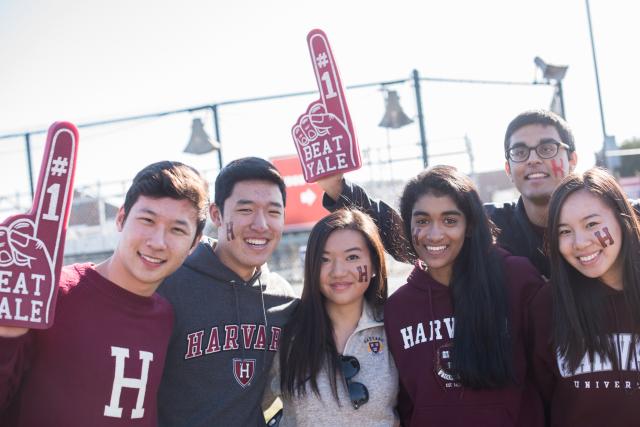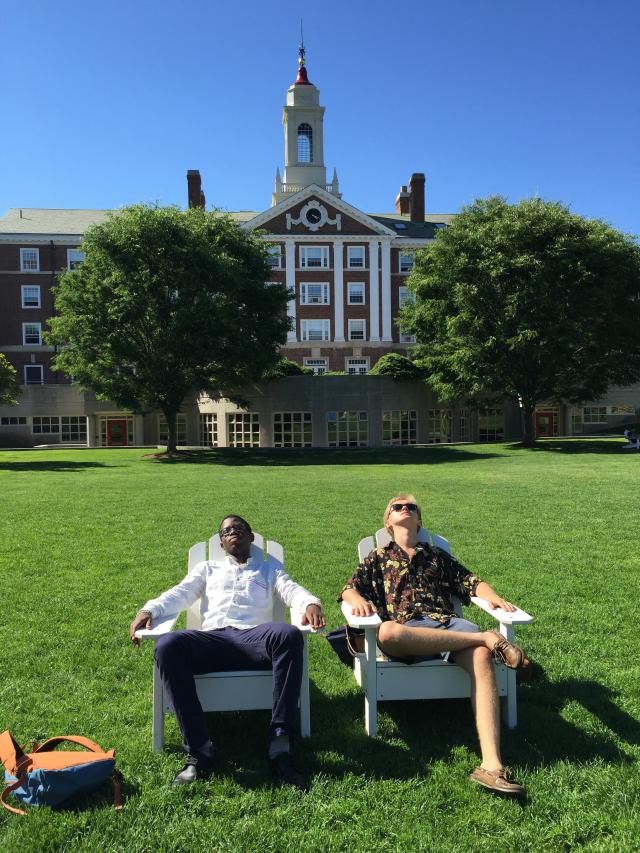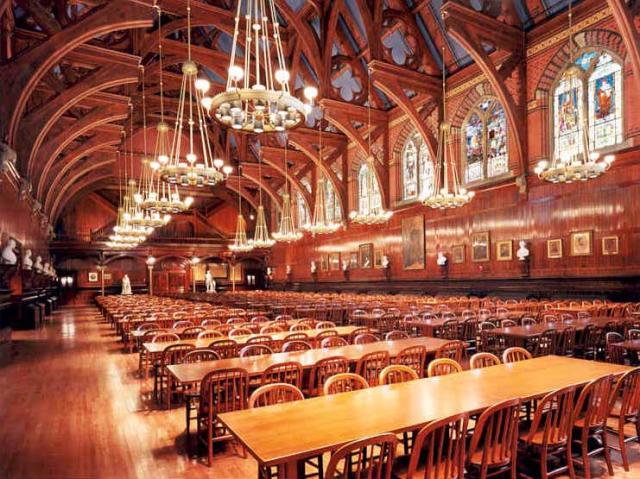Last semester I went on a class field trip that would change my life. I had always been told the same thing most students hear, that if they want an opportunity they just have to ask and it can be as easy as that. It turns out that asking indeed never hurts.

Tundra
Me enjoying the silence and beauty of the Nome summer.
On a visit for one of my classes, we went to Woods Hole Oceanographic Institute (WHOI) to learn about how they conduct research on oceanography and got to see the devices they actually used to monitor phenomena in the ocean—including a rare look at the Alvin, the deep sea submarine, which was at the time getting repaired. But the most impactful moment was hearing that one of their lead scientists was looking for volunteers to help on a research cruise in Alaska. It had just been a casual suggestion at the time, but one that inspired me and my teammate, another girl in the class, to take a chance and email him later that day.
Long story short, we got a response, met with him on Zoom, and our tickets were booked that very night. From there, it was just a long, few months until August and I would be shipping off to Nome!
I met with the other girls in the airport in Anchorage before we took our last flight together to Nome. The airport in Nome is essentially one room, where you can get your ticket, check your bag, go through security, and baggage claim. It was exciting to look around the airport, trying to guess who else came in on our flight who would be joining us on the research vessel, the Norseman II. We ended up meeting two other scientists who were awaiting luggage with us and a friend of the ship’s crew brought us back to our hotel from the airport.
Nome is a small historic town on the coast of northwestern Alaska with a population of roughly 4,000 people and is most famously known for the Iditarod, a dog sled race that draws in huge crowds every winter. During the summer, it is a gorgeous tundra town full of small businesses and friendly people. We went to the local convenience store that night to get some food, and then the next morning, before boarding the vessel, we explored.
We made a name for ourselves in Nome, dragging luggage behind us as we went from shop to shop. We went to a fantastic coffee shop, the Bering Tea Company, a consignment store that sold keepsakes, jewelry and art made by local indigenous artists, and a wonderful visitor center.
Riding to the boat, I was excited. Newly stocked up on a bright red Nome blanket and snacks, my friend and I boarded the 115 foot long old crabbing boat that had been converted into a research boat. On board, we went through several safety drills and it was finally time to figure out what exactly we were doing there. Previously, we had only heard that we would be deckhands – but had no clue what that entailed.

Fond Hello
On deck in my daily personal protective equipment blowing a kiss to my friend behind the camera. Maddie Stuhlreyer
We harnessed up, got on some gloves, safety glasses, and hard hats and set off to strap ourselves onto the deck. The process was intimidating at first – our job was to manage the main instrument for the voyage, a CTD (conductivity, temperature, and depth). This was a large cylindrical contraption comprised of multiple sensors that would measure conductivity, temperature, depth, chlorophyll max, and florescence, and twelve bottles that would open and close at different depths, controlled by someone inside on the computer.
Before each launch, we would make sure the bottles were cocked open, the caps for the sensors were off, and everything was in working order to be lowered off the deck. Then we would attach tag lines which one person on either side of the CTD would hold onto as it was lowered by the A frame, a large crane-like pully on the back of the boat, where we would use the tag lines to guide it off the back and into the ocean. From there, we would soak it and carefully lower it to the bottom and collect water samples on the way up. When it was time to retrieve, we would have hooks with tag lines attached on poles and would attach them to the rails of the CTD so we would then use them to keep it secure on the way back up and into the boat. Once back in the boat and secure on deck, it was time for water samples to be collected and a thorough cleaning as we steamed to the next station.
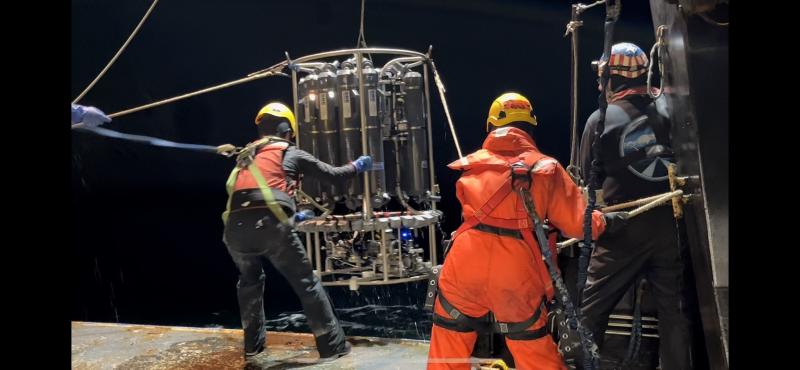
CTD Retrieval
My teammate and I retrieving the CTD together.
Each station could be anywhere from twenty minutes to an hour apart. I got to wear this really cool “Mustang suit,” a bright orange drysuit for arctic temperatures. This became my uniform for the next three weeks, alongside steel toed rain boots (that I got to take home!). We collected at over 250 stations over the course of the three weeks. The crew was split into 12-hour shifts and I was put on a night shift where I would work from 6pm until 6am.

CTD at Surface
CTD soaking at the surface of the water to calibrate the sensors before it is lowered to the seafloor.
Living on a boat for three weeks was different from what I had expected. My teammate, another classmate, a WHOI employee, and I stayed in a small suite with a bathroom in tiny bunks with cozy wraparound curtains for privacy. As the shifts worked, someone was always asleep. Honestly, I got the best sleep of my life with the rocking of the boat and my cozy top bunk, something that I miss now that I am at school (with a busier schedule).
Every day I would wake up and come upstairs around 5pm for a safety meeting and dinner before suiting up and getting ready to launch the CTD. There were about 25 people aboard, 6 crew and the rest scientists, people who I got to know very well considering we had one room where we ate meals, had the lab, and spent all of our time between stations. Living in a confined space on the open ocean was a bonding experience, and something that felt difficult to describe when I came back. Things felt so routine, and there were a ton of snacks on board. The food was also, surprisingly, some of the best food I have ever had. Our daytime cook baked fresh bread every night for dinner, and the nighttime cook (who also helped us on deck) would chef up whatever he wanted. Most of the time, he would try to compete with the day cook’s cooking – something that we reaped the benefits of happily!
My pride of the trip was that I never got seasick. I enjoyed our days off when the seas were too rough, watching the chop.
Most of my free time was spent, if not powering through a book and a half a day, above deck looking out at the sea. It was weird, looking out at open ocean, feeling the cool late summer arctic breeze against my skin, and trying to picture where I was on a map. It had been my dream since I was a child to go to Alaska and the arctic, but I figured it was something that I couldn’t do until I had a career and time to fund it myself. It was hard to comprehend that I was there, in the arctic circle, above Alaska. This was the farthest north I had ever gone, and probably the farthest north I would ever go.
It was cold, mostly in the 30s, and we all got to know very well the way the ocean cycled, and as it was late summer the sun would “set” around midnight and rise around 3 or 4 in the morning. That is actually overstating it. In reality, it would be sunset starting at 11pm and we would wait for the sun to go down and then suddenly it would be 3am when we would realize that what we thought was sunset was actually sunrise and the day would begin again.
A favorite memory of mine was while launching the CTD and then waiting for it to be lowered and brought back up, since I got to hear all sorts of stories from the crew about their days being fisherman and working on ships travelling around the world. They had so much of a variety of experiences, and a life that felt so different from mine. I was heavily intrigued. It brought me back to my childhood where my family ran a really dingy roadside motel in rural Wisconsin, and I would sit out at the fire every night with our customers listening to them tell me about their lives and stories that I would take with me, even knowing I would never see them again.
The first day we saw orcas. Throughout the course of our trip we saw a ton of whales (grey whales, humpbacks, maybe some others), puffins, seagulls, and walruses. At night, the light attached to the A frame would attract jellyfish. I could stand at the edge of the deck and look at them while the CTD was in the water. Occasionally, we would do “grabs” where we would lower this strange bucket to the bottom of the ocean to grab sediment and critters and then go through it to sort through mud for worms, starfish, and clams.

Mud Sorting
Sorting through the mud for arctic seafloor critters.
My highlights of our destinations would have to include the Diomedes, Point Barrow, and crossing above the 73rd parallel. Once we crossed into the Arctic Circle, at about 66 degrees N, we became “blue noses” or “arctic explorers,” something that involved a secret initiation ceremony (which I am not allowed to disclose).
One of our first lines for the CTD was to the Diomede Islands, a pair that included one smaller American island and one larger island that was part of Russia only three miles apart. Originally, we were not supposed to get within two miles of Russia, but through some convincing... I managed to get within half a mile, as we went between the islands! It was so cool to see Russia so close, even if it was just an island.

Russian Diomede Island
Within half a mile of the Russian Diomede Island!
Point Barrow, the peninsula upon which lies the northernmost town in the United States (Utqiagvik, Alaska), was one of the landmark sites for our research cruise. We went by at night, and seeing land was always exciting but it was even more exciting when it was seeing the top of the United States.

Jellyfish at Point Barrow
Utqiagvik in the background and two jellyfish.

Utqiagvik
Me eating the northernmost town in the United States.
Me eating the northernmost town in the United States.
As for the 73rd parallel, this was our northernmost line of the trip. It was cold, and we saw icebergs and far less jellyfish as water temperatures dropped. (No polar bears though, unfortunately). We got to –1.7 degrees celsius for water temperature, which is really cold! Taking water samples with water below freezing was really interesting, with the salt content lowering its freezing temperature this would have to be the coldest water I have ever felt before it was ice. It was foggy all the time, and we could barely see 50 meters off the sides of the boat at night. During the day there was always a thick layer of fog on the horizon.

Iceberg Ahead
One of the icebergs that we saw while above the top of Alaska.
After heading back down, we went east of Point Barrow for another three lines and then started our chug home. It was three days of packing up, eating, and filling our time going over everyone’s projects.
Of the projects that were going on, there was obviously the CTD data but also data of surface water specifically sampled every 30 minutes, data about oxygen and gas content in the ocean water, and more about how the currents were reacting and their patterns around this time of year.
Most immediately important, and a large reason that the cruise happened in general, was the research done on algal blooms in the Bering Sea and above. The theory was that the red tides (harmful algal blooms that occur regularly across the globe, but for this region were common off the coast of Japan and sometimes Alaska) would have their dormant spores swept northwards through the Bering Strait into the Arctic Ocean by the current, and were not actively blooming because the water was too cold. However, with accelerated warming of the arctic, there was concern that sometime in the future these spores would erupt into a bloom once the temperatures were high enough.
Unfortunately we found a massive algal bloom of Alexandria cells while we were there, big enough to send out health alerts in surrounding countries. They also did a “fly over” where a coast guard plane surveyed for struggling animals, and found 60 dead walruses just on one trip! The way that these blooms kill is through being consumed by the filter feeders, like clams, and which are eaten by the walruses who then have the toxin accumulating in their bodies over time before they eventually weaken and unfortunately die. Additionally devastating is that if these blooms continue, it will seriously harm many of the seaside communities and indigenous communities that rely heavily on getting most of their resources from the ocean. We are still awaiting more word as to what else was found during the research.
Coming into port was a mess of packing up, disassembling the CTD, and getting everything ashore and into storage containers. Once that was done, we went into Nome with the scientists for dinner and a night out on the town as a last farewell to the people we had not known at all previously, but had become our family while on the boat. I met so many cool people, and researchers that I hope to continue keeping up with in the future.
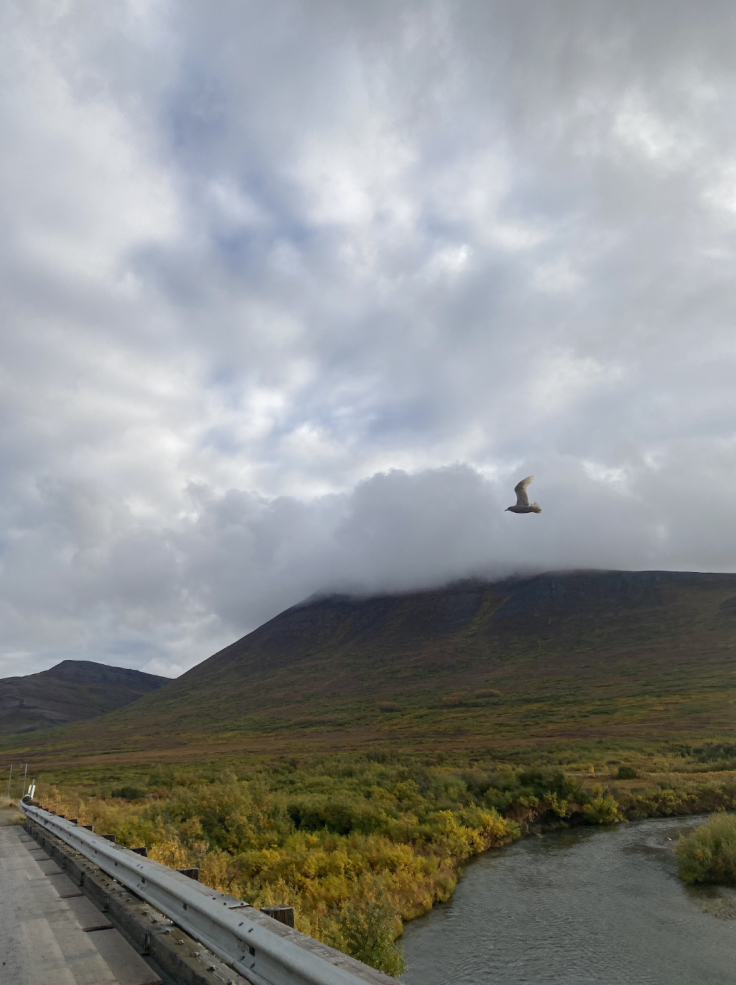
Nome
Seagull flying above a stream in the hills just outside of Nome, Alaska.
The next day we went for the best drive of my life. I am not joking. With a rental car, we drove through one of the only three roads into/out of Nome and into the summer tundra. It was so quiet and the flora was colorful. I was in awe the entire time. I did not want to leave! If anything, it stamped within me the sensation that I needed, desperately and hopelessly to return to Alaska. Then, we went to the airport and off we were, back to school and jumping back into normal college life. It was hard, and now only feels like a fever dream, but solidified my love for field research and gave me so much insight as to what I want to do for the rest of my life. It showed me that I am capable of adapting to any scenario-even living on a small crabbing boat for three weeks in the arctic.

Personal Growth
Feeling cool and looking frigid after my life changing experience doing research in the Arctic.



